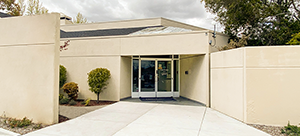How to plan for you parents’ move to Assisted Living.
The signs are subtle at first, but over time you may become more and more aware that something about your parents has changed. As our parents age, there comes a point where you can no longer ignore the fact that they may need to live in a safer, more controlled environment than their own house.
- The refrigerator always seems to be empty
- Unopened mail and unpaid bills are piling up on the desk
- The house never quite feels clean
- Prescription medication is in disarray
- The microwave has been broken for months
- Dead plants inside and out
Plan “B” is Far Better than Plan “S”
There is nothing more important than having a plan in place if, and when, the time comes to move a loved one to an assisted living community. If you put these decisions off until there is an immediate need, you often resort to a plan of last resort—scrambling for the first available room in a facility that would have never made the list of potential options.
The ideal situation is to know which communities your parents seem to prefer the most. Where do they have friends? Which is the closest to their doctors? Which offers the lifestyle and amenities they like? Which one best fits their finances?
Start the Conversation—Now!
The first, and hardest, thing to do is to start the conversation. It is not an easy subject to broach and there is a lot of sensitivity around the idea of moving from your home. The goal is to involve your parents in the process of determining their needs and desires so you can create a short list of options. Another good strategy is to find out which communities your parents have already experienced by visiting friends or relatives or attending on-site events. That is an easy discussion that often offers insights on how they view the future and their thoughts on living in a community.
Gas Up the Car
There is no better way to evaluate an assisted living community than to see it, feel it, smell it and taste it for yourself. Once you have narrowed down the list of potential options go and tour them with your parents. There are two ways to go about this. You can call ahead and set up a private tour where you can meet with the executive director and key staff, have lunch and get the grand tour. The other strategy is to walk in without an appointment so you can see what the feel of the community is like, and how the staff responds, on an average day. For the best overview, do both. Start with the surprise visit and then schedule a follow up meeting with your parents.
But Can We Afford It?
Typically the first thought is that an assisted living community is an expensive proposition that is out of reach for most. When you take the time to understand the typical, monthly household expenses you might be surprised at the high cost of living in their own home. This is just a short list to consider:
- Mortgage or rent
- Property taxes
- Utilities: Electric, gas, water, cable television, telephone, sewer taxes and garbage collection
- The cost of groceries and dining out
- Gas and transportation expenses
- Appliance repair and replacement
- Home and lawn maintenance
Add up those expenses and compare that number to the cost of living in the community, it’s probably a closer fit that you might have thought. The sale of a home, Veteran’s Aid & Attendance benefits, cashing in life insurance policies and other financial assets are creative ways of paying for the benefits of life in a community.
Consider the Care
The main reason for moving to an assisted living community is to have the assistive services and health care resources in place for when they are truly needed. Ask the community for references so you can talk to others who have a family member living in the community. Ask them about the following topics:
- The quality of care they have observed
- The attitude and demeanor of the care staff
- The development and adjustment of care plans
- Open lines of communication with administrators
- Any complaints about the dining services
- The overall happiness of their family member
You also need to understand the levels of care available: Assisted Living services, Memory Support, Skilled Nursing, Long Term Care and Rehabilitation Therapy. They may never be required, but knowing they are available adds another level of confidence in your decision.
Understanding these aspects of each assistive living environment will help you narrow your list. The last thing you want is to be in a situation where your loved one receives substandard care and you have to make another complicated move. Planning ahead can take care of all this and help ensure that how you feel, and what you feel you need to do, are one in the same.




















